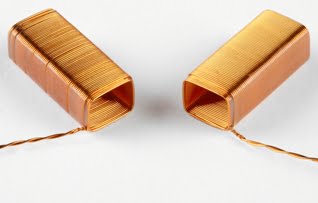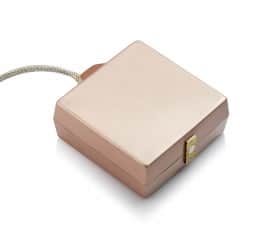What is Coil Winding

An electromagnetic coil is produced by winding an electrical conductor, such as a wire, into the shape of a coil, spiral, or helix. The shape and dimensions of a coil are designed to fulfill a particular purpose. Parameters such as inductance, resistance, and the strength of the desired magnetic field greatly influence the design of coil windings.
Electromagnetic coils are used in applications where electric currents interact with magnetic fields, such as in inductors, electromagnets, transformers, and sensor coils. Either an electric current is passed through the wire of the coil to generate a magnetic field, or conversely, an external time-varying magnetic field is passed through the interior of the coil, generating a current in the conductor.
Coil Winding Methods and Machines
Where large quantities are required, winding coils by hand is impractical. For traditional coil sizes, mass production of electromagnetic coils relies on automated machinery.
Coil winding can be categorized into several groups based on the type and geometry of the wound coil: wild or jumble, helical, and orthocyclic.
Machines that wind coils in a helix create layers and switch directions, moving forward and backward. However, this method only works for a small number of layers because, when it reaches a certain limit, the structure becomes too tight to contain, especially with fine wires.
Orthocyclic winding is the most efficient method to wind coils, placing the wire of the upper layer in the grooves of wires of the lower layers. Engineers aim to optimize the efficiency of coil winding processes by minimizing the materials and space required for coil winding. These coils exhibit good heat conduction, and the electromagnetic field strength is evenly distributed across the windings.
Micro Coil Wire Challenges
One of the major challenges facing designers—for example, designers of invasive medical devices—is to fit the physical size of the device within the constraints imposed by the intended use. This, in turn, demands micro coils that are much smaller than previously manufactured.
machines must deal with many factors, such as:
- breaking point of the wire and insulation
- Tight winding spaces
- High speeds
- Wire that is not absolutely straight
Micro Coil Winding
Equipment used to wind regular-sized coils can’t be used to serially wind micro coils. This necessitates the development of specialized equipment. Using in-house engineering, Benatav has developed state-of-the-art methods and equipment that allow for the winding of micro coils to a degree not previously possible.
To manufacture a micro coil with as many as 2000 turns, it’s necessary to greatly reduce the thickness of the wire. The thinnest copper wire currently available is 8 microns (0.0003 inches). Benatav is one of the few companies in the world capable of working with such fine wires, and we are currently working to produce insulated wires even smaller than 8 microns.
Using our custom micro-machining technologies, we manufacture coils with over 1000 windings that are smaller than the head of a pin. However, such small coils pose further challenges in the form of connecting their fine wires.
Ultra-fine wires are so thin that traditional welding or soldering methods destroy them. To overcome these challenges, Benatav has developed a proven, cutting-edge, thermo-pressure technology to produce precise soldering with tight tolerances at very high temperatures.
Applications
Micro coils are required where there is a demand for miniaturized applications. The following is a list of some of these applications that benefit from our micro coil and ultra-fine wire connectivity technologies:
- Transferring control, monitoring, and logging data to/from miniature implants
- Transferring energy to implants requiring battery charging or electrical charge input for activating and operating their systems
- Radiating energy for RF treatments, heat treatments, or electromagnetic radiation-based and electromagnetic pulse treatments to expedite tissue fusion
- In-vivo magnetic navigation, employing a local or external magnetic field
The Future of Micro Coil Technologies
Using our innovative ultra-fine wire and micro coil winding technologies opens up a limitless range of new possibilities for designers of miniaturized medical equipment and other industries. As designers become more aware of our technologies, we anticipate that the variety of applications that can utilize them will increase significantly.
Call Benatav on +972-3-9345951 or send us an email info@benatav.com, to discuss how our micro-coil technology can benefit your business.
More Articles:




